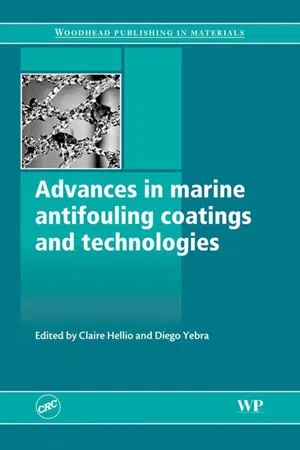
- 784 pages
- English
- ePUB (mobile friendly)
- Available on iOS & Android
Advances in Marine Antifouling Coatings and Technologies
About This Book
Marine biofouling can be defined as the undesirable accumulation of microorganisms, algae and animals on structures submerged in seawater. From the dawn of navigation, marine biofouling has been a major problem for shipping in such areas as reduced speed, higher fuel consumption and increased corrosion. It also affects industries using off-shore structures such as oil and gas production and aquaculture. Growing concerns about the environmental impact of antifouling coatings has led to major new research to develop more environmentally-friendly alternatives. Advances in marine antifouling coatings and technologies summaries this wealth of research and its practical implications.This book is divided into four sub-sections which discuss: marine fouling organisms and their impact, testing and development of antifouling coatings, developments in chemically-active marine antifouling technologies, and new surface approaches to the control of marine biofouling. It provides an authoritative overview of the recent advances in understanding the biology of fouling organisms, the latest developments on antifouling screening techniques both in the field and in the laboratory, research on safer active compounds and the progress on nontoxic coatings with tailor-made surface properties.With its distinguished editors and international team of contributors, Advances in marine antifouling coatings and technologies is a standard reference for manufacturers of marine antifouling solutions, the shipping industry, oil and gas producers, aquaculture and other industries using offshore structures, and academics researching this important area.
- Assesses marine antifouling organisms and their impact, including a historical review and directions for future research
- Discusses developments in antifouling coatings examining chemically-active and new surface approaches
- Reviews the environmentally friendly alternative of safer active compounds and the progress of non-toxic compounds
Frequently asked questions
Information
Table of contents
- Cover image
- Title page
- Table of Contents
- Copyright page
- Contributor contact details
- 1: Introduction
- Part I: Marine fouling organisms and their impact
- Part II: Testing and development of antifouling coatings
- Part III: Chemically active marine antifouling technologies
- Part IV: Surface approaches to the control of marine biofouling
- Index